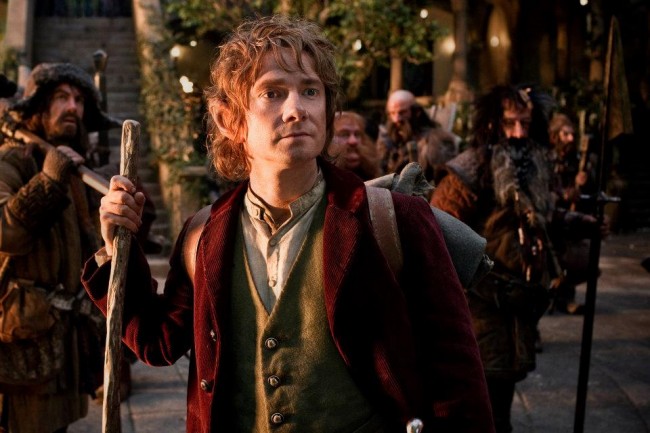The Hobbit: An Unexpected Journey
Glenn Yarbrough, Where Are You?

Review written by Robert Patrick
Starring: Martin Freeman, Ian McKellan
Peter Jackson’s frenetic, bombastic, whirling and prosthetic-inundated Lord of the Rings franchise lassoed imaginations by utilizing computer animation and the pastoral New Zealand landscape. After a few years of toiling on projects such as the moribund King Kong and the pastel washed The Lovely Bones, Jackson, reaching for the well once again, comes back to adapt another J.R.R. Tolkien story – this time The Hobbit. Filmed in an F1-like speed of 48 frames per second, Jackson shows Middle-earth in intense clarity. Weathered coats and splintered canes now look like high-definition props, bulbous noses and bulldog-like jowls of Dwarves resemble putty, and hobbit holes look like sound stages. The rough, gritty, and smudged skies of Tolkien’s world, seen in prior Jackson films, look less imposing and more screensaver-like.
The Hobbit begins with the meek, reserved and petulant-when-bothered Bilbo Baggins (Martin Freeman). Brandishing a pipe and a frayed book, Bilbo burrows his feet into the soil of his land and feels content with leading a docile, uneventful life. This is interupted when a wizard – the weary, enigmatic Gandalf (Ian McKellan) – raps on Bilbo’s door and presents him with an “unexpected journey”. The wizard invites a bushel of ornery, gluttonous, and daffy Dwarves into the hobbit’s home and all but demands that Bilbo join them on an adventure.
Along the way, the group of determined, weapon wielding protagonists cross swords with everything from salivating wolves to portly trolls. Jackson – as usual – takes pleasure in letting his special effects team craft scenes of inspired axe clanging and rock smashing. Sadly, the action sequences, despite being laboriously and artfully conducted, feel vapid and showy. The movie feels more like a Universal Studios 3D ride than it does a film. With that being said, this journey isn’t all that “unexpected”. Jackson’s frilly, effervescent whimsy inoculates the would-be darkness at every turn. The usual, innocuous character exchanges are nicked with heavy glances and dirty brows, but the drama feels constructed, inorganic. Still, the first installment of The Hobbit trilogy feels motivated by its energy and technical prowess. As an exercise in CGI, Jackson and company have made an amazing looking film that only sometimes flails like a fish out of water (the frame rate bruises some scenes).
The 1977 Rankin/Bass version – crudely animated and all – has more of a seething darkness and palpable grit than Jackson’s adaptation does – and it even runs a tight 77-minutes. Here, the story is hacked into three pieces where one meaty offering could have sufficed. Fans of the first three films will love the newest addition to the franchise, but naysayers of the original pictures will find little to be motivated by. The biggest problem with The Hobbit: An Unexpected Journey is that it’s more of an expansion pack than it is its own film.
